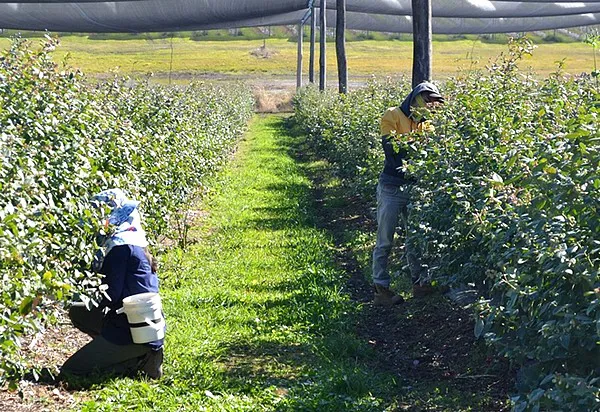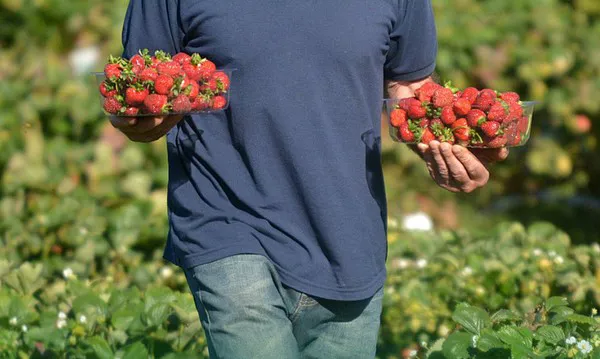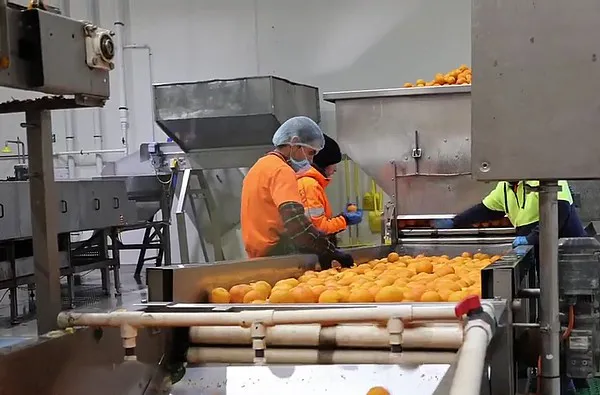Australia's peak horticulture industry bodies have welcomed the announcement of an Agriculture Visa, aimed at boosting long-term workforce numbers, which have been reducing even before the government closed the international borders at the start of the COVID-19 pandemic.
After years of lobbying from industry groups and the National Farmers’ Federation (NFF), the Federal Government has finally committed to delivering on the visa, even though a lot of the details still have to be worked out. In making the announcement, the government admitted that regulations to enable the creation of the Australian Agriculture visa will be in place by the end of September 2021, but the operation of the visa will depend on negotiations with partner countries.
In March, The National Lost Crop Register found that losses due to the little to no access to labour had already passed $45million (since launching in December 2020), and that figure was only expected to rise steeply heading into the winter months.
NSW Farmers Horticulture Committee chair Guy Gaeta, who is also an apple and cherry grower, says the state-based Association has loudly joined the chorus of calls from farming groups for an Ag Visa as pandemic-induced travel restrictions have intensified the need for long-term solutions to address farm labour shortages.
“An Ag Visa is just what we need for our sector. The horticulture industry has been calling for a dedicated and productive workforce to harvest and package fruit and vegetables for many years, so this announcement is great news,” Mr Gaeta said. “Last year we just managed to get through our harvest but now we’re coming into harvest in September and we need people again – the whole industry needs people starting at the summer for six months. I do thank the Federal Agriculture Minister for his efforts in getting this up and running this year."
Queensland's strawberry season is in full swing and Chair of Berries Australia, Peter McPherson says the announcement was positive news for the sector which had been struggling to find harvest workers since the borders closed for COVID-19.
“The $1.4 billion berry sector has a heavy reliance on manual pickers due to the soft nature of the fruit and whilst historically we have employed backpackers, a stream of dedicated workers who want to work in the sector is very welcome,” Mr McPherson said. “It is important to remember that these workers are creating jobs for Australians not taking them away as these pickers and packers mean we can employ more locals in longer-term roles and they generate significant economic activity in regional communities.”

Photo courtesy: Berries Australia media release.
With the new stone fruit season commencing in late October, Summerfruit Australia Ltd (SAL) says that adequate labour across all growing regions of Australia was paramount in getting high-quality apricots, nectarines, peaches and plums harvested and ready for the domestic and export markets. Harvest across 2020/21 was difficult with quantities of fruit being left on the tree due to a lack of labour.
“We are actively seeking additional labour from all and any sources, including locals, other Australian residents and people in the country with work rights, local youth, released prisoners, travelling retirees/workers,” Mr Finlay said.
Mr Ian McAlister, Chair of the Summerfruit Export Development Alliance added that the Ag Visa will help to fill the labour gap left by the decreasing number of international backpackers. Australian stonefruit growers utilise a wide range of workers and the Ag Visa will add another component to the labour mix.
“While the announcement is welcome it is essential that the program is up and operating by the 30th of September so that stone fruit growers can move forward in a positive way when harvest commences,” he said.
Currently, all regions are short of pruners, which is a major concern because, as a guide, the workforce required triples by mid-September for thinning and picking. Another impact SAL is currently competing with is the low levels of labour in our regional areas that has seen other employers dipping into our traditional pools of seasonal labour, as hospitality, engineering firms, transport operators and even local government are all struggling for staff.
SAL says the Ag Visa, as announced by Minister David Littleproud, will widen the recruitment opportunities for an uncapped number of low to highly skilled workers from ASEAN countries. The industry body believes negotiations are well underway to extend the visa to other countries, and is keen to see the Ag Visa activated and borders opened to allow the sufficient flow of interested labour into the stonefruit regions from Stanthorpe in Queensland to the Huon Valley in Tasmania and from Swan Hill in Victoria to the Perth Hills in WA.
The NFF says the idea of an Ag Visa was conceived by the NFF and its members in 2016, and Prime Minister Scott Morrison first expressed his support for the visa in 2018. The agriculture industry is working to achieve a farm gate output value of $100 billion by 2030.
“The NFF has been unrelenting in its call to Government for the introduction of an Agriculture-specific Visa to give farmers access to the workforce they need,” NFF President Fiona Simson said. “There is no question an inadequate workforce is a hand-break to agriculture’s growth and to the prosperity of the regional communities who depend on the farm sector. The COVID-19 pandemic has brought into sharp focus, farmers’ reliance on an international workforce, particularly during the peak seasonal work periods. Farmers would always prefer to employ local workers, but the reality is agriculture depends on a combination of domestic and international labour.

But she added that the onus is now on state and territory governments and their chief health officers to approve quarantine arrangements to safely house incoming foreign workers.
“We recognise the development of joint state, territory and Commonwealth quarantine facilities such as the Bladin Village in the Northern Territory. We hope to see more collaborations like this in the very near future,” Ms Simson said. “During the ongoing COVID-19 pandemic, agriculture continues to be the engine room of the economy. Farmers have not missed a beat in keeping supermarket shelves stocked in support of all Australians. We hope farmers across the country can expect the full support of the Australian Parliament in making the Ag Visa a reality."
Citrus Australia also welcomed the news, with CEO Nathan Hancock saying the government has recognised the contribution of the agriculture sector to the national economy and the importance of supporting the thousands of farmers across Australia struggling to manage the impacts of the pandemic.
“Growers across all sectors this year, who contribute billions of dollars to the national economy and rural and regional Australia, have suffered significant financial losses, and great mental stress, due to the severe labour shortage,” Mr Hancock said. “On behalf of them, we thank the government for committing all government departments to work together on delivering the agriculture visa. Citrus Australia sees the agriculture visa as an important component of a reformed and sustainable agricultural workforce. Structural change to the horticulture workforce is imperative to the future growth of this burgeoning industry. The agriculture visa not only provides confidence to our citrus growers to continue to invest in their export programs, but enables them to focus on attracting returning workers to their farms and pack sheds, leading to increased efficiencies in their business."

Photo courtesy: The Nationals Party's Ag Visa promotional video.
The visa will be open to applicants from a range of countries and will be available to skilled, semi-skilled and unskilled workers.
“We are confident the proposed visa will complement the Seasonal Worker Programme and Pacific Labour Scheme, which remain vitally important to the citrus industry," Mr Hancock said. "The ag visa provides another avenue, particularly to smaller citrus businesses, to recruit skilled, semi-skilled and unskilled workers, and provides incentive to invest in them. We look forward to seeing the detail of the scope the ag visa will deliver. We look forward to contributing to the visa framework to ensure it benefits both growers and ASEAN workers who want to build a career in the agriculture industry.”
Strong and "enthusiastic" support has also come from peak horticulture body Growcom, and Chief Executive Stephen Barnard says news of the government’s commitment to the new visa would be a shot in the arm for growers looking to make long term investments in building their business.
“For many businesses in the Australian horticulture industry, labour is their most significant input and single most expensive cost of production. With so much uncertainty around labour supply at the moment, business confidence across the sector had naturally taken a hit,” said Mr Barnard. “Landing this new visa for Australian agriculture is putting in place an important piece in completing our long term labour puzzle. Like any puzzle, determining the details of this visa piece are now going to be essential to ensure it fits neatly with existing pieces, and other pieces yet to be placed."
Earlier this month, National Cabinet announced that between now and March 2022, Australia will also double the number of Pacific workers in Australia under the Pacific Labour Scheme and the Seasonal Worker Programme, bringing in an extra 12,500 workers.
